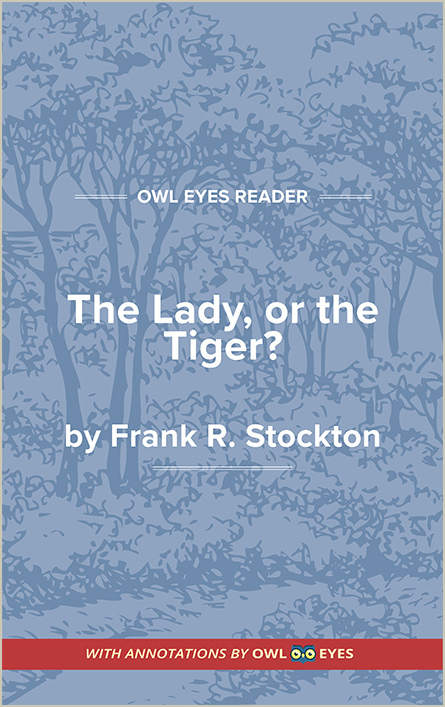Analysis Pages
Historical Context in The Lady, or the Tiger?
19th-Century Humorists: Distinct from comedians, humorists are intellectuals who use humor in their writings or public speeches for the purpose of argument—rather than pure entertainment. Humorists often approach their subject matter subtly. This subtlety can be seen in the works of Mark Twain and Frank Stockton, often heralded as the leaders of the American humorist movement. Stockton combines humor with surprise endings to subvert expectations, as he does in “The Lady, or the Tiger?”
Fantasy and the Influence of Pre-Raphaelites: The Pre-Raphaelite Brotherhood was a group of British artists who gained influence in the 1850s. These artists used vivid depictions of fairy-tale settings to evoke an idealized artistic era of the past. These artists had great influence on writers who incorporated fantasy elements in their works, such as J.M. Barrie, author of Peter Pan. Frank Stockton’s “The Lady, or the Tiger?” shows some of the influence of the Pre-Raphaelite tradition. However, fantasy literature of Stockton’s day distinguished itself from its Pre-Raphaelite roots by adding elements of irony and absurdity. American humorists used irreverence and absurdity to express the same displeasure with modern, mechanized society that the Pre-Raphaelites condemned.
Historical Context Examples in The Lady, or the Tiger?:
The Lady, or the Tiger?
🔒"In after years such things became commonplace enough..." See in text (The Lady, or the Tiger?)
"hired mourners..." See in text (The Lady, or the Tiger?)
"exhibitions of manly and beastly valor, the minds of his subjects were refined and cultured..." See in text (The Lady, or the Tiger?)

